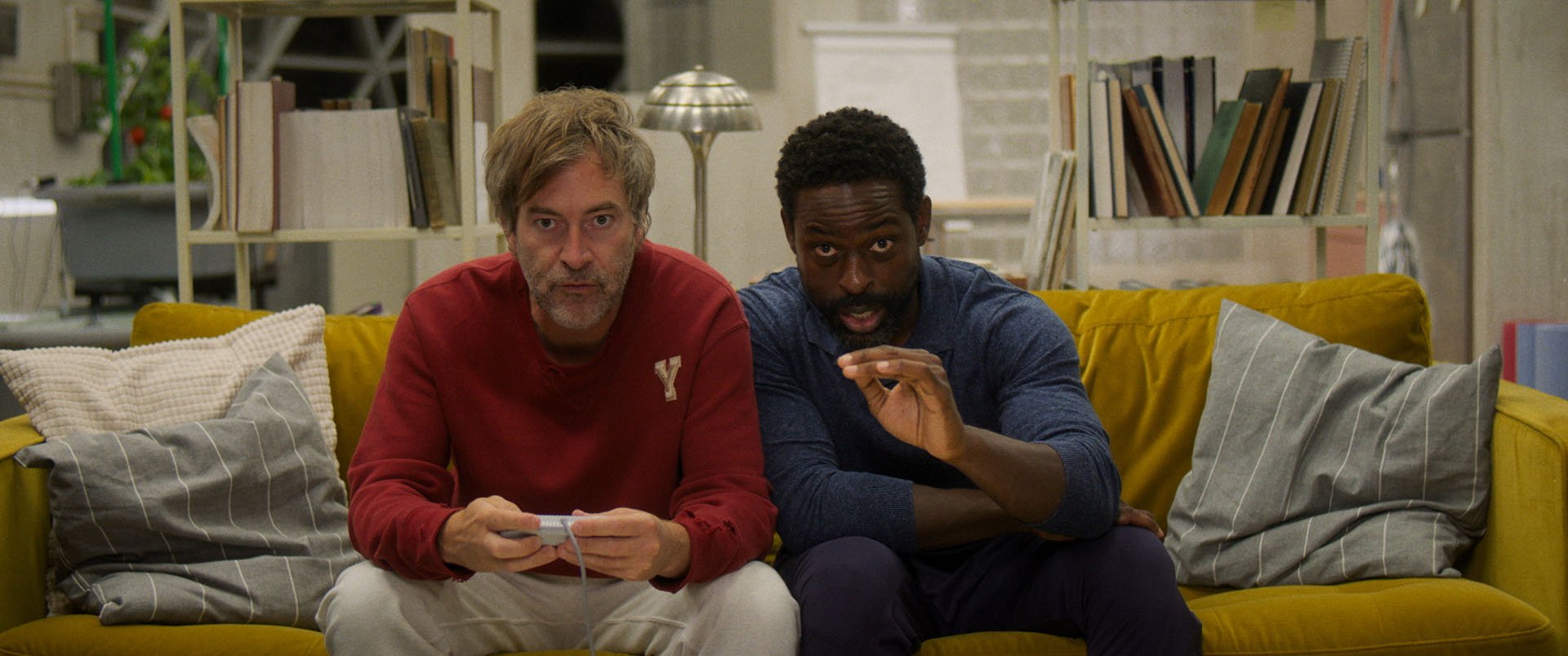MOVIE REVIEW: Biosphere
BIOSPHERE— 2 STARS
In Biosphere, the directorial debut of mumblecore producer Mel Eslyn, two middle-aged men who are old friends find themselves co-habitating inside a protective dome structure with limited resources. The dwelling resides under perpetual darkness outside from an unexplained ecological disaster. Without a doubt, the setup of Biosphere is extremely tantalizing and gives rise to a host of questions.
LESSON #1: WHAT WOULD YOU DO?-- The quickest points of interest to manifest with Biosphere are the “what” and “who.” If you had your way or wish, what limited items would you want or need in a bunker like this for either your comfort or survival? We’ve all answered the “if you could only have one” style of questions with deserted island scenarios when it comes to entertainment picks or personal trinkets. The same importance goes for your choice of housemate. If you had to be stuck with one person in this dire of a pickle, who would it be?
Biosphere checks a few of those boxes right away of observable answers to a few of those initial qualifying questions. This is Us Emmy winner Sterling K. Brown and Safety Not Guaranteed favorite are Ray and Billy respectively. They are old college classmates from Yale occupying this facility furnished with IKEA-esque simplicity and economical space usage when it comes to amenities. The gentlemen survive on a stock of nonperishable food, a small garden of greens and tomatoes, and a meticulously maintained pond of sustainable fish. For their education and sanity, they make due with an all-important Super Nintendo game system, a chess set, and a limited shelf of classic works, vinyl records, and nonfiction resource books.
From their introduction in the film jogging their small lap for exercise and chatting among posted chore schedules and Post-It note reminders, Biosphere frames who is the responsible and forthright one and who is the worry-wart and layabout. We learn Billy is the disgraced former President of the United States whose decisions possibly caused the toxic environment outside. Ray was one of his top advisors who oversaw the creation and planning that went into the residential lifeboat. Ray and Billy aren’t Felix and Oscar, but they’re close and they are, quite possibly, the last men on Earth.
The setting is all well and good, but the bigger questions about Biosphere that are not so easy to outline are the “why” and “how.” In that regard, Biosphere fairly firmly chooses a lane. Writers Mel Eslyn and Mark Duplass are much more interested in the “how” than the “why.”
The inciting event that spurs Biosphere’s intrigue is the death of the pond’s last female fish. Without scratch paper and carrying a palpable sense of dread, Ray does the math to know this could be the beginning of the painful end and plans for the worst. Meanwhile, the more simple-minded Billy waffles between panic and resignation with the dwindling prospects appearing before them.
LESSON #2: HOW WOULD YOU SURVIVE?-- This is when Biosphere’s script pushes a fast-forward button to allow story and biological evolution to play a hand in determining the fragile future. Parallel to one of the male fish appearing to adapt its organs and physical makeup to change genders for essential procreation, the very same slow and dramatic transformation begins to occur to one of our human men (I won’t spoil who).
LESSON #3: HOW FAR CAN FRIENDSHIPS GO?– Eye-opening sexual reproduction is now on the table between Billy and Ray, hammering home the uncomfortable truth of “how” survival is going to have to happen. Needless to say, the “how” becomes quite shaky as Biosphere morphs further into unthinkable new relationship dynamics between the two best friends. As the audience, we too are back to posing a big question. This time, it’s the blunt of one could you or the best friend with you do the deed to continue the human race.
Another source of suspense presents itself when a mysterious single green light begins to appear outside the biosphere, getting bigger and brighter by the day. The men wrestle with its ominousness as either a sign of hope or a red herring that’s in their heads. Combining that mystery with the quirky survival measures sets Biosphere on a course to be a very odd social experiment.
Our main actors, the film’s only two and ambitious pairing at that, step to the occasion to address this microcosm with a sliding range of bravery and humor. While playing pretty aligned to their types, Duplass and Brown both generate and confront their fair share of WTF moments playing off each other during the compounding crisis. Naturally, viewers will be waiting for cracks of composure to arrive.
LESSON #4: THE FLAWS OF HALF-COMPLETED EXPERIMENTS– In a way, those nearly-certain freakouts of personality never quite show up in Biosphere because the cracks propagate elsewhere with unclear causes and timelines beyond the habitat. Soft science-fiction films like this are very much allowed to traverse heady angles. Creativity is more than welcome, but Biosphere dangles more than it delivers. Cruising almost too quickly, the film unfortunately behaves like an open-ended mumblecore film and stops well short of satisfactory conclusions to the core of its hypothetical musings on behavior and existential panic. The unanswered “why” becomes more maddening than the physical and mental claustrophobia locking everyone in.
LOGO DESIGNED BY MEENTS ILLUSTRATED (#1131)





